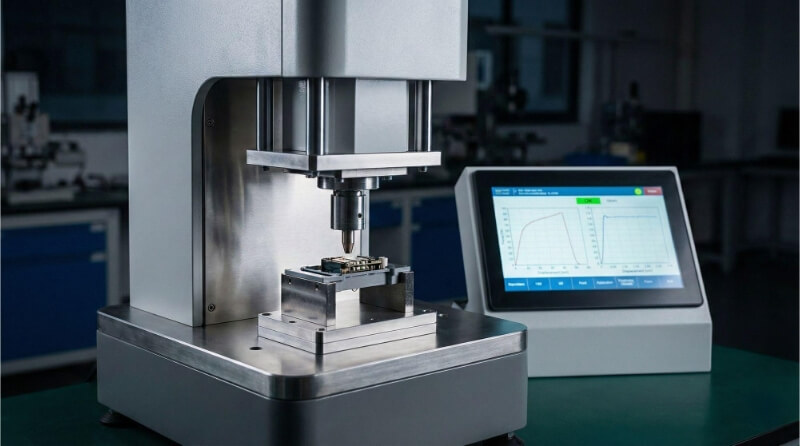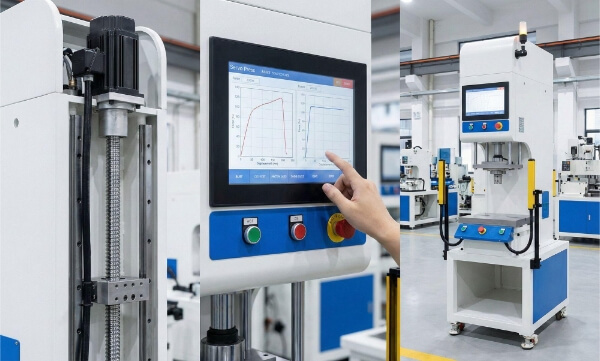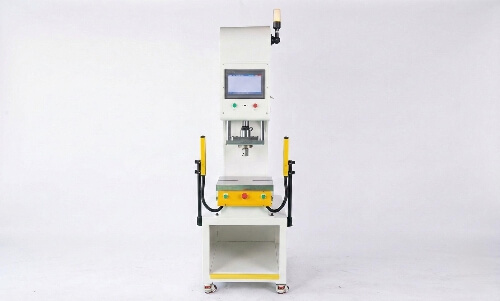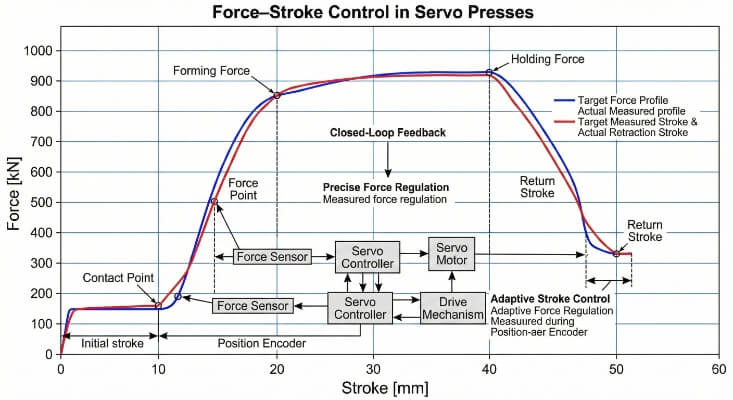모든 제조업체는 정밀한 절단, 일관된 품질 유지, 촉박한 생산 기한 준수라는 세 가지 중요한 과제에 직면해 있습니다. 수동 금속 절단은 종종 재료 낭비, 비용 낭비, 프로젝트 지연으로 이어집니다. CNC 금속 절단은 이러한 문제를 정확히 해결하여 제조업에 혁신을 가져왔습니다.
이 최첨단 기술이 어떻게 귀사의 제조 역량을 향상시킬 수 있는지 알아보고 싶으신가요? CNC 금속 절단을 현대 생산에서 필수 불가결한 부분으로 만드는 주요 공정, 응용 분야 및 이점을 살펴보겠습니다.
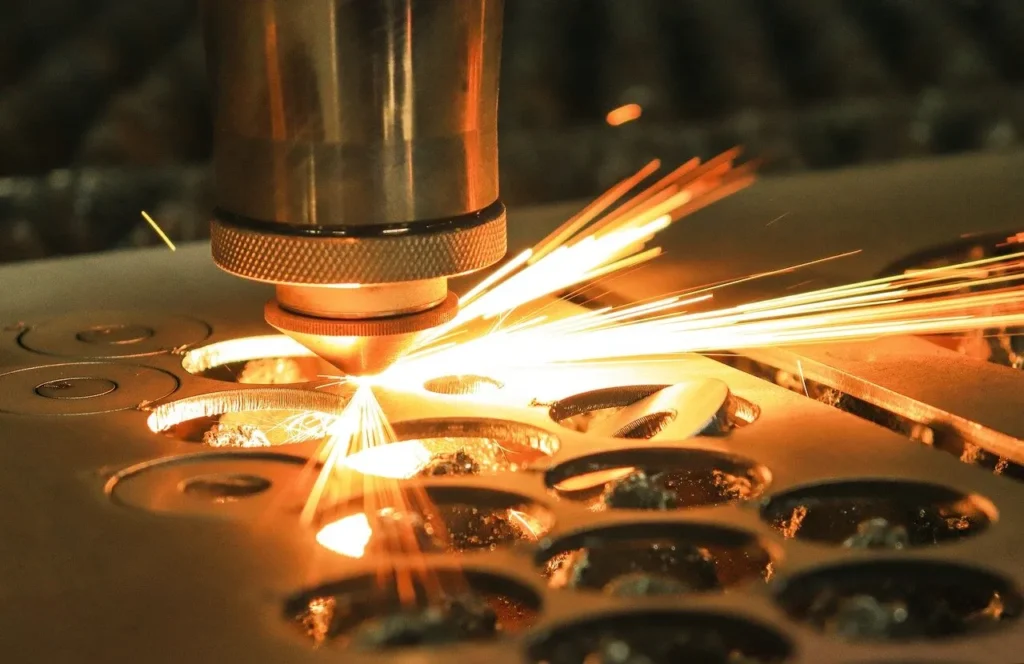
CNC 금속 절단의 기초
컴퓨터 수치 제어는 제조에 자동화된 정밀도를 도입하여 금속 가공에 혁명을 일으켰습니다. 이 기술은 설계와 생산 사이의 간극을 메워 디지털 청사진을 실제 부품으로 전환합니다.
CNC 금속 절단이란 무엇인가요?
CNC 금속 절삭은 제어된 재료 제거를 통해 미가공 금속 스톡을 완제품 부품으로 변환합니다. 이 공정은 컴퓨터가 안내하는 정밀한 경로를 따르는 특수 절삭 공구를 사용합니다. 이 방법으로 간단한 브래킷부터 복잡한 항공우주 부품까지 모든 것을 제작할 수 있습니다.
일반적인 CNC 금속 절삭 작업은 CAD 설계로 시작됩니다. 시스템은 이 설계를 기계 지침으로 변환한 다음 절삭 공구가 재료를 체계적으로 제거하도록 안내합니다. 그 결과 최소한의 후처리가 필요한 매우 정확한 부품이 만들어집니다.
CNC 기계 작동 방식
CNC 기계를 완벽한 조화를 이루며 작동하는 고도로 조율된 시스템이라고 생각하세요. 컴퓨터 두뇌는 프로그래밍된 명령을 해석합니다. 그런 다음 마이크로초 단위의 정밀도로 기계 부품에 지시를 내립니다.
기계는 작동 중에 수많은 변수를 모니터링합니다. 절삭 속도, 공구 위치 및 재료 이송 속도가 필요에 따라 자동으로 변경됩니다. 고급 센서가 충돌을 방지하고 최적의 절단 조건을 유지합니다.
금속 절삭에 사용되는 CNC 기계의 종류
각 유형의 CNC 기계는 특정 제조 요구 사항을 충족합니다. 밀은 복잡한 3D 모양과 패턴을 만드는 데 탁월합니다. 선반은 놀라운 정밀도로 원통형 부품을 생산합니다. 다축 기계는 이러한 기능을 결합하여 다목적성을 극대화합니다.
현대의 제조업은 종종 특수 CNC 기계를 사용합니다. 5축 밀은 복잡한 항공우주 부품을 제작합니다. 스위스형 선반은 소형 의료 기기를 생산합니다. 대형 갠트리 기계는 거대한 산업용 부품을 처리합니다. 이러한 다양성 덕분에 제조업체는 각 작업에 적합한 공구를 선택할 수 있습니다.
주요 CNC 금속 절삭 공정
각 CNC 절단 방법은 특정 제조 요구 사항을 충족합니다. 이러한 공정은 속도, 정밀도 및 재료 호환성 측면에서 차이가 있습니다. 선택은 프로젝트 요구 사항, 재료 유형 및 생산량에 따라 달라집니다.
밀링: 밀링: 정의 및 프로세스 개요
갈기 회전 도구를 사용하여 공작물에서 금속을 제거합니다. 절단 도구는 재료의 표면을 여러 방향으로 움직이며 평평한 표면, 복잡한 3D 모양 및 세부적인 특징을 만듭니다.
터닝: 금속 절삭의 작동 원리
선회 고정된 절삭 공구가 공작물을 회전시키면서 모양을 만듭니다. 이 공정은 원통형 부품을 높은 정확도로 제작하는 데 탁월합니다. 일반적인 응용 분야에는 샤프트, 볼트 및 기타 원형 부품이 포함됩니다.
드릴링: CNC 절삭에서 드릴링의 역할
CNC 드릴링 금속 공작물에 정밀한 구멍을 생성합니다. 컴퓨터 제어로 일관된 구멍 직경과 깊이를 보장합니다. 최신 기계는 비스듬히 드릴링하고 복잡한 구멍 패턴을 자동으로 생성할 수 있습니다.
방전 가공(EDM)
EDM은 유전체 유체에서 전기 스파크를 사용하여 금속을 절단합니다. 이 공정은 경화된 강철과 복잡한 내부 절단을 처리합니다. 기계적 힘 없이 매우 엄격한 공차를 달성합니다.
레이저 커팅: 레이저 커팅: 개요
레이저 절단 집중된 광선으로 금속을 녹이거나 기화시킵니다. 이 방법은 가장자리가 깨끗하고 복잡한 디테일을 구현합니다. 판금과 얇은 소재에 매우 효과적입니다.
워터젯 커팅: 장점 및 응용 분야
워터젯 물과 연마 입자를 혼합하여 금속을 절단합니다. 이 냉간 절삭 공정은 열 왜곡을 방지합니다. 재료 특성을 유지하면서 두꺼운 재료를 절단합니다.
플라즈마 절단: 금속 제조에 널리 사용되는 방법
플라즈마 절단 이온화된 가스를 사용하여 전도성 금속을 절단합니다. 이 공정은 두꺼운 재료에 대해 빠른 절단 속도를 제공합니다. 많은 산업 응용 분야에서 비용과 품질이 균형을 이룹니다.
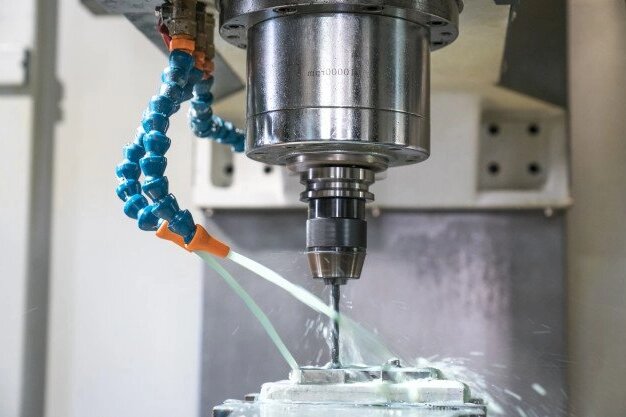
CNC 기계를 사용하여 절단할 수 있는 재료는 무엇입니까?
금속 절단 기능은 재료 유형과 두께에 따라 다릅니다. 각 CNC 방법은 특정 금속 특성 및 작업 요구 사항에 부합합니다. 적절한 절단 방법은 정밀도, 속도, 비용 효율성의 균형을 유지합니다.
다음은 표준 재료와 절단 기능에 대한 간단한 참조 표입니다:
| 재료 종류 | 레이저 절단 | CNC 펀칭 | CNC 밀링 | 플라즈마 절단 |
|---|---|---|---|---|
| 알류미늄 | 최대 10mm | 최대 6mm | 두께 제한 없음* | 최대 50mm(가장자리 시작) |
| 온화한 강철 | 최대 32mm(1.25") | 0.5-6mm | 두께 제한 없음* | 최대 38mm |
| 스테인레스 스틸 | 최대 12mm | 0.5-6mm | 두께 제한 없음* | 최대 25mm |
| 놋쇠 | 최대 6mm | 최대 4mm | 두께 제한 없음* | 최대 20mm |
| 구리 | 최대 4mm | 최대 3mm | 두께 제한 없음* | 최대 20mm |
CNC 금속 절단의 이점
금속 제조는 오늘날의 경쟁이 치열한 시장에서 정밀도와 효율성을 모두 요구합니다. CNC 기술은 첨단 자동화와 강력한 제조 기능을 결합하여 이러한 요구 사항을 충족합니다. 이 섹션에서는 CNC 금속 절단을 현대 생산의 초석으로 만드는 핵심 이점을 살펴봅니다.
향상된 정확성 및 일관성
디지털 제어를 통해 모든 절단이 사양과 완벽하게 일치하도록 보장합니다. 기계는 생산 공정 내내 미크론 이내의 정확도를 유지합니다. 이러한 정밀도는 다음과 같은 결과로 이어집니다:
- 수천 개의 부품에서 반복 가능한 결과
- 배치 간 변동 최소화
- 품질 관리 문제 감소
- 최종 제품의 완벽한 맞춤 및 조립
비용 효율성 및 폐기물 감소
혁신적인 프로그래밍과 자동화로 운영 비용을 크게 절감할 수 있습니다. CNC 기계의 정밀도는 재료 낭비를 최소화합니다. 결과는 다음과 같습니다:
- 부품당 인건비 절감
- 자재 폐기율 감소
- 불량 부품 감소
- 최적화된 자료 사용
- 재작업 요구 사항 감소
고속 생산 및 처리 시간
CNC 기계는 품질을 유지하면서 수동 방식보다 빠르게 작동합니다. 가동 중단 시간을 최소화하면서 지속적으로 작동합니다. 다음과 같은 이점이 있습니다:
- 연중무휴 24시간 프로덕션 기능
- 빠른 설정 변경
- 신속한 프로토타입 개발
- 더 빠른 주문 처리
- 간소화된 프로덕션 일정
디자인 및 프로토타입 제작의 유연성
디지털 제어를 통해 빠르게 디자인을 수정하고 맞춤 제작할 수 있습니다. 제조업체는 시장 수요에 빠르게 적응할 수 있습니다. 그 결과
- 간편한 디자인 업데이트
- 빠른 프로토타입 반복
- 맞춤형 부품 생산
- 복잡한 지오메트리 기능
- 다양한 소재 옵션
CNC 금속 절삭의 응용 분야
CNC 금속 절삭은 여러 산업 분야에 걸쳐 중요한 항공우주 부품부터 복잡한 예술품까지 다양한 부품을 제작합니다. 이 기술은 일회성 프로토타입부터 대량 생산에 이르기까지 다양한 생산 요구 사항에 맞게 조정할 수 있습니다.
항공우주 및 자동차 산업
이러한 분야는 금속 부품에서 최고의 정밀도와 신뢰성을 요구합니다. CNC 절단은 엄격한 산업 표준을 충족합니다:
- 허용 오차가 엄격한 엔진 부품
- 항공기 구조 부품
- 브레이크 시스템 구성품
- 변속기 부품
- 사용자 지정 섀시 요소
의료 기기 제조
의료 제조에는 탁월한 청결도와 정밀도가 필요합니다. CNC 기계가 생산합니다:
- 수술 도구
- 임플란트 구성 요소
- 진단장비 부품
- 의료 기기 하우징
- 맞춤형 보철 부품
전자제품의 CNC 금속 절단
현대의 전자제품은 정밀한 금속 부품에 의존합니다. 일반적인 응용 분야는 다음과 같습니다:
- 방열판
- 섀시 및 인클로저
- 회로 기판 실장 하드웨어
- 커넥터 하우징
- EMI 차폐
산업용 부품을 위한 맞춤형 제작
산업 장비에는 내구성이 뛰어나고 정밀한 부품이 필요합니다. CNC 절단이 만들어냅니다:
- 교체 부품
- 맞춤형 기계 부품
- 생산 라인 장비
- 자재 관리 도구
- 전문 툴링
예술 및 조각 분야의 CNC 커팅
아티스트는 CNC 기술을 사용하여 창의력의 한계를 뛰어넘습니다. 응용 분야는 다음과 같습니다:
- 메탈 월 아트
- 대형 조형물
- 건축 요소
- 장식 패널
- 맞춤형 사이니지
농업 및 축산 기계
다음과 같은 축산 기계의 프레임은 정밀한 절단이 필요합니다:
- 말 마구간
- 마구간 장비
- 말 보호소
결론
CNC 금속 절단은 디지털 정밀도를 통해 현대 제조업에 혁신을 가져왔습니다. 이 기술은 여러 재료에 걸쳐 뛰어난 정확성, 속도, 다용도성을 제공합니다. CNC 절단의 성공은 특정 재료와 프로젝트 요구 사항에 적합한 공정을 맞추는 데서 비롯됩니다.
자주 묻는 질문
CNC 금속 비용은 얼마인가요?
CNC 금속 절삭 비용은 몇 가지 주요 요인에 따라 달라집니다. 재료 유형과 두께는 절삭 시간과 공구 마모에 영향을 미칩니다. 부품의 복잡성은 프로그래밍 및 설정 요구 사항에 영향을 미칩니다. 기계 시간은 일반적으로 시간당 $75 ~ $250입니다.
CNC 금속 절단은 얼마나 정확할까요?
CNC 기계는 금속 절삭 작업에서 놀라운 정밀도를 달성합니다. 표준 공차는 대부분의 애플리케이션에서 ±0.001인치(0.025mm)에 이릅니다. 고정밀 기계는 필요한 경우 더 엄격한 공차를 달성할 수 있습니다.
CNC 기계로 절단할 수 있는 금속의 두께는 어느 정도인가요?
금속 절단 두께는 공정과 재료에 따라 다릅니다. 레이저 시스템은 최대 1.25인치 두께의 강철을, 플라즈마 커터는 최대 3인치의 알루미늄을, 워터젯은 몇 인치의 금속을 절단할 수 있습니다.
CNC 절단은 제조 효율성을 어떻게 향상시킬까요?
CNC는 자동화와 정밀도를 통해 제조를 간소화하고 있습니다. 기계는 피로 없이 지속적으로 작동합니다. 프로그램 저장을 통해 신속한 작업 변경이 가능합니다. 다축 기능은 단일 설정으로 복잡한 부품을 완성합니다.
디지털 워크플로로 오류와 낭비를 줄입니다. 자동화된 도구 관리로 가동 시간을 극대화합니다. 통합 검사로 일관된 품질을 보장합니다. 이러한 기능이 결합되어 높은 표준을 유지하면서 생산성을 높일 수 있습니다.
안녕하세요, 저는 케빈 리입니다

지난 10년 동안 저는 다양한 형태의 판금 제작에 몰두해 왔으며 다양한 워크숍에서 얻은 경험에서 얻은 멋진 통찰력을 이곳에서 공유했습니다.
연락하세요

케빈 리
저는 레이저 절단, 굽힘, 용접 및 표면 처리 기술을 전문으로 하는 판금 제조 분야에서 10년 이상의 전문 경험을 갖고 있습니다. Shengen의 기술 이사로서 저는 복잡한 제조 문제를 해결하고 각 프로젝트에서 혁신과 품질을 주도하는 데 최선을 다하고 있습니다.

